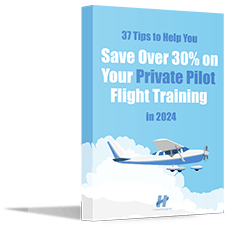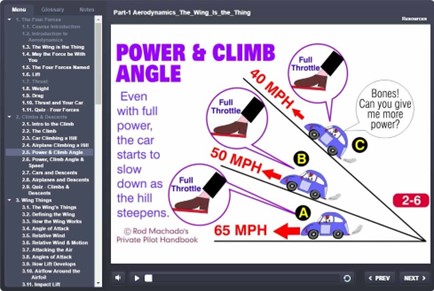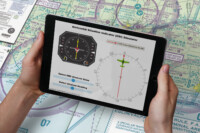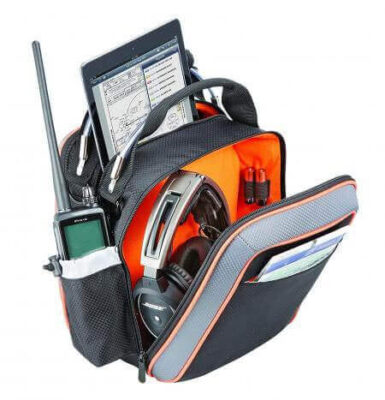10 Tips to Help You Save Over 30% on Your Private Pilot Flight Training
9 June 2023 | Updated on February 05, 2024
Learning to fly is one of the finest experiences you can have, but it is also a huge investment, both in terms of time, and money.
In this article you will find 10 actionable tips and tricks to save money during your private pilot flight training.
Now, before we start, let’s get something straight: there is a difference between being economical and being cheap. And when it comes to getting your training for your pilot’s license, you want the best training you can get. When you finally get to the point that you can fly an aircraft, not only will your life be in your hands, the lives of others, possibly your family and friends may depend on being able to handle that aircraft with skill and with a good background in training.
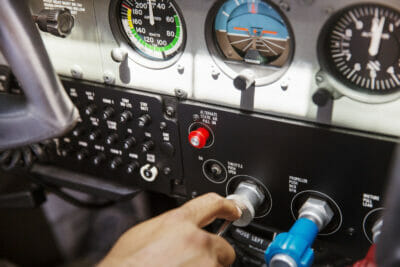

And yes, flight training is not an inexpensive operation. You are learning to operate some very sophisticated machinery and to learn a new skill that is different than anything else you have ever done. You’re probably looking at spending over $10,000 on flight lessons, ground school, pilot gear and checkrides, before you finally earn your private pilot license. For most people, that’s a significant chunk of cash, and it can be tough to come up with the funds all at once.
But even though you do not want to cut corners on the important elements of your training which is time with your flight instructor and in the air learning to handle that aircraft, with some extra effort on your part, you can cut some costs and not compromise the quality of your pilot’s license.
Luckily, we’ve got you covered. Not with cash, unfortunately, but what we can do is give you 10 great tips to help slash the cost of your flight training, and save you a bundle in the process. With a little planning and effort, you should be able to cut your training costs by a third.


Download our FREE ebook: 37 Tips to Help You Save Over 30% on Your Private Pilot Flight Training
It includes 8 sections, 36 pages and 5000+ words of actionable tips and tricks that you can use right away to save big on your flight training!
10 Tips to Save Your Private Pilot Flight Training
One final note before we begin: Personal responsibility is key here. The tips in this article and our ebook won’t magically reduce your training costs by 30%. It will take time, effort and discipline on your part to do that. But if you don’t mind putting in the work, these tips should help you make it happen!
With that out of the way, let’s start saving you some money.
1. Preparation before your training begins
There is a great old (British) military saying: Proper Planning and Preparation Prevents Piss Poor Performance. The 7 P’s, as it’s referred to, applies to flight training as well. Taking the time to properly prepare yourself before you begin your training will save you both time and money.
Do your research and plan ahead. This is probably the most important tip on the list.
If you know you want to learn to fly, start setting some money aside as soon as possible. The more time you have to save up, the less financial stress you’ll have when it comes time to pay for your training. We know this may not directly save you money, but having the funds ready in advance will:
- Save you from having to borrow money at high interest rates;
- Help you take advantage of advance/bulk booking discounts;
- Ensure continuance of flight lessons, without interruption due to lack funds.


2. Get your ground training done first
Before the actual flying lessons begin, there is a fair bit of ground training and theory you have to go through. While the theoretical part of flight training is not as expensive as the actual flying lessons in the airplane, there are still ways to save money here.
We know that the thrill of flight is what draws most people to becoming a pilot, but starting with your ground training first will save you money in the long run. Finishing your theory before your flight lessons will also help you better understand what’s going on in the airplane, and save you time (and money) when it comes to your flight lessons.
During the practical part of your training, the training materials being available online also make it extremely easy and convenient to review specific lessons when preparing for a flight, or reviewing certain concepts related to your training that day.
3. Use online ground training to save time and money
These days, there is no shortage of online courses available for all sorts of aviation topics. Interactive online ground school courses are often available for a fraction of the price of traditional classroom-based instruction. Not only that, but they are often quicker and more convenient, and save you the hassle of having to travel and take time off work, allowing you to get your ground training done in a shorter amount of time.
The more you get out of the way on your own, the less time in the airplane which costs by the hour. And by taking charge of your training and only using the experts for hands on training you need, you get just as good an education in flying but you save a ton of money.
If we may make a personal recommendation: Rod Machado – renowned flight instructor and author (and voice) of the FSX virtual flying lessons – offers an amazing online ground school course. You can check out our own 2024 in-depth review of the course here.
The course includes 26 course modules and 40 hours of interactive e-learning lessons, with lifetime access. At a price of just $279.00, following this course is already a great way to save big on your flight training, while learning from one of the best in the business. Of course, you are free to take our own advice of shopping around before deciding on which ground school course to go with!
$279.00
Learn more4. Pilot gear: Shop around, cut back on extras, and focus on the essentials
A big part of learning to fly and getting your license is having the right pilot gear. While investing in quality pilot gear is important, it doesn’t have to cost an arm and a leg.
Online shopping is a great way to save money on your pilot gear. Not only will you save time by not having to drive around from store to store, but you’ll also save money by being able to compare prices and find deals more easily. Online reviews can also be a helpful tool when it comes to researching pilot gear and reading about other (student) pilot’s experiences with certain headsets, flight bags, radios and other gear.
We know it’s tempting to buy all the latest and greatest gadgets, but it’s important to stick with the basics when you first start out. This doesn’t mean you have to skimp on quality, but there’s no need to go overboard with what you buy.
Focus on the essentials, like a good headset and a proper flight bag. Every single piece of pilot gear you can buy ranges from cheap to expensive. When starting out, focus on the basics and save money on the extras.
As a reference, when I did my own flight training, these were the essentials I purchased:
- Headset:Faro G2 ANR
- Flight bag: Flight Outfitters Lift Bag
- Flight computer: E6B Flight Computer
- Fuel tester: Aircraft Fuel Tester
- A basic sports chronometer
- Aeronautical charts of the area I flew in
5. Make use of discounts, grants and scholarships
There is no way around the fact that flight training can be expensive. However, there are ways to save big in the form of grants, scholarships, or discounts.
There are flight training scholarships and grants available specifically for aspiring pilots, which can save you a lot of money. Organizations like the Women in Aviation International and AOPA Flight Training Scholarships can save you thousands of dollars, so be sure to check them out.
Another great way to save money on flight training is to make use of (student) discounts. Many schools and online vendors offer discounts or special offers for student pilots, so be sure to ask around. It may not save you a lot on each purchase, but those small amounts can add up over time!
6. Flight simulator: practice at home


Learning to fly is not only done in the air or in a classroom. As mentioned before, you can take an online ground school course and work your way through the material at home and at your own pace. But there are also other ways to save money on flight training by doing some practice and studying at home.
Flight Simulators are not only fun to use, they also offer a tremendously valuable tool during flight training and beyond. A flight simulator gives you the opportunity to practice maneuvers and procedures at home, saving you a lot of money on fuel, aircraft rent and instructor fees.
Not having to spend valuable time inside the aircraft trying to figure out these, rather unintuitive, systems will save you again some precious time, ánd money.
7. Flight schools and flying clubs
The practical part of flight training is where it gets expensive. Renting a plane and paying for an instructor can quickly add up.
Prices for flight training vary greatly between different schools or flying clubs. It pays off to shop around and compare prices on all aspects, such as aircraft rent, instructor fees and other related costs. When it comes to flight schools, you generally have the choice between two types: a Part 61 or Part 141 school. A Part 61 school is more flexible and offers more freedom
in obtaining your license. A Part 141 school, on the other hand, conducts classes in strict accordance with guidelines and requires you to complete the course within an allotted time period and school.


If you’re thinking of getting your Private Pilot License, joining a flying club may be an excellent option to consider. Flying clubs often offer discounted rates on aircraft rentals, instruction and supplies. Membership fees vary depending on the club, but typically they are much lower than what you would pay at a flight school, as a flying clubs is usually not a commercial operation, but just an organization covering costs by dividing them among its members.
While flying clubs are a great way to learn to fly and be part of a passionate aviation community, they do not offer the same professional environment and structure as a flight school. They also won’t offer advanced licenses such as multi-engine, commercial or IFR, so if your goal is anything further than a private pilot license you might want to look into a flight school instead.
8. Find a good instructor
“The mediocre teacher tells. The good teacher explains. The superior teacher demonstrates. The great teacher inspires.”
William A. Ward
Learning to fly is not just about passing an exam or getting your license. It’s a journey, and for that journey you need someone who will teach, explain, demonstrate, inspire and motivate you every step of the way. No matter if you’re learning to fly in a flight school or flying club, a good flight instructor can save you time and money by making sure you don’t repeat mistakes or fall into bad habits.
While flight schools or clubs generally appoint an instructor to you, there’s no harm in asking around during your research for the best fit. Even after having flown with an instructor for a couple of hours you can still decide to change if for some reason he or she wasn’t the right one for you.
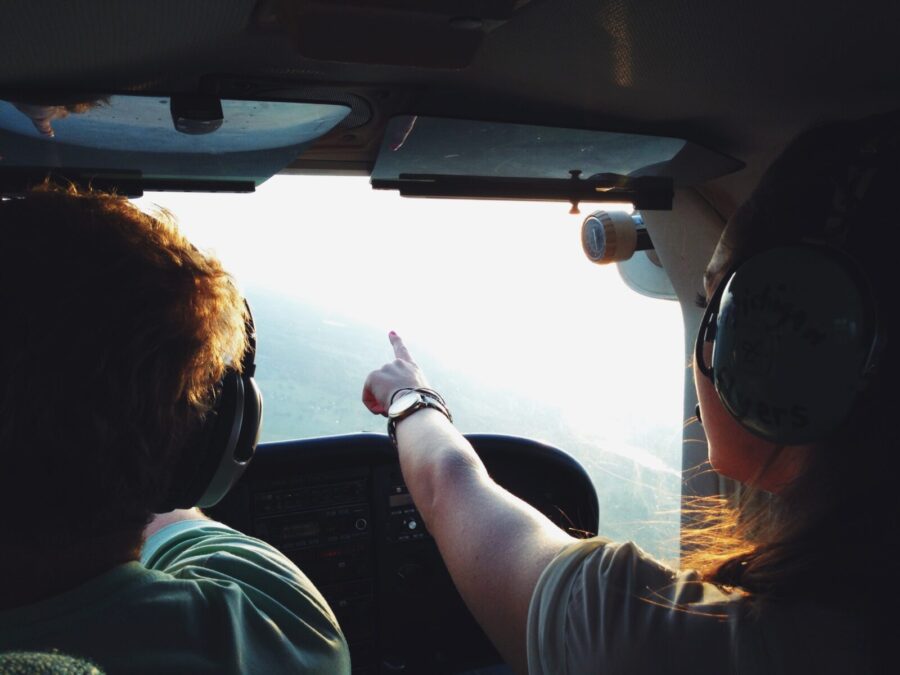

Also, don’t be afraid to talk openly with your instructor about finances.
While finances are rarely something that everyone talks about openly, it’s still important to have a conversation with your instructor (or flight school) about finding ways to save money on any additional costs that may come up during your training.
Your instructor can help you save time and money by suggesting the most efficient route for your flight training, and working with you on optimizing the time spend in the airplane (which is the most expensive time). This way, you can rest assured that no valuable time, or money, is wasted. Being open and honest about your financial situation will also save you a lot of stress and help you become a successful pilot faster, so don’t be afraid to talk about it.
9. Flying lessons: Fly frequently
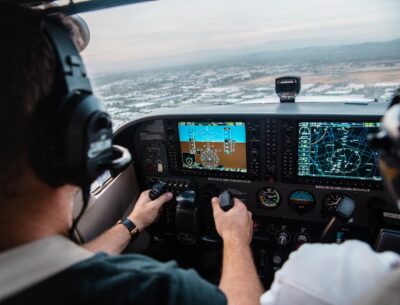

By far the most expensive part of flight training is your actual flying lessons, and this is an area where you can save big.
Perhaps the single most important piece of advice we can give you is to fly frequently. While it may seem obvious, a lot of student pilots find themselves in a situation where many weeks go by without flying. This not only leads to feeling rusty and unmotivated, but it also means you’re paying for extra flight time, as every lesson you will spend time on rehearsing and refreshing previous exercises.
To save money here, find a way to balance your finances and lifestyle with your flight training, so that you can plan for at least one or two lessons per week. By flying frequently, you’ll be able to learn and grow quicker without having to take up additional flight time reviewing the same exercises over and over again because you haven’t been in the air for a long time.
This tip alone saved me personally about 20% in aircraft rental and instructor fees, as I was able to complete my training in about 9 months instead of 1,5 or 2 years (flying only in the weekends).
10. Flying lessons: Fly prepared
Another way to not lose valuable flight time is by preparing for every lesson as good as you possibly can. That includes reading the theory material, studying the exercises you will be doing on the flight, and planning the route beforehand.
By being prepared and coming to each lesson ready to fly, you save a lot of valuable flight time. Taking the time to properly plan ahead can save you from having to go back and fly a route or exercise multiple times due to inadequate preparation from your side. This will save you valuable fuel-burning flight time, and thus money.
Final words
Finally, don’t be afraid to ask questions or look for advice from experienced pilots. The aviation community is full of knowledgeable people who are more than happy to share their experiences and tips on saving money while completing flight training.
These tips should help you save money on your private pilot flight training in 2024. With a bit of planning and diligence, you should be able to find ways to reduce your overall costs significantly.


Download our FREE ebook: 37 Tips to Help You Save Over 30% on Your Private Pilot Flight Training
It includes 8 sections, 36 pages and 5000+ words of actionable tips and tricks that you can use right away to save big on your flight training!
Good luck!




















